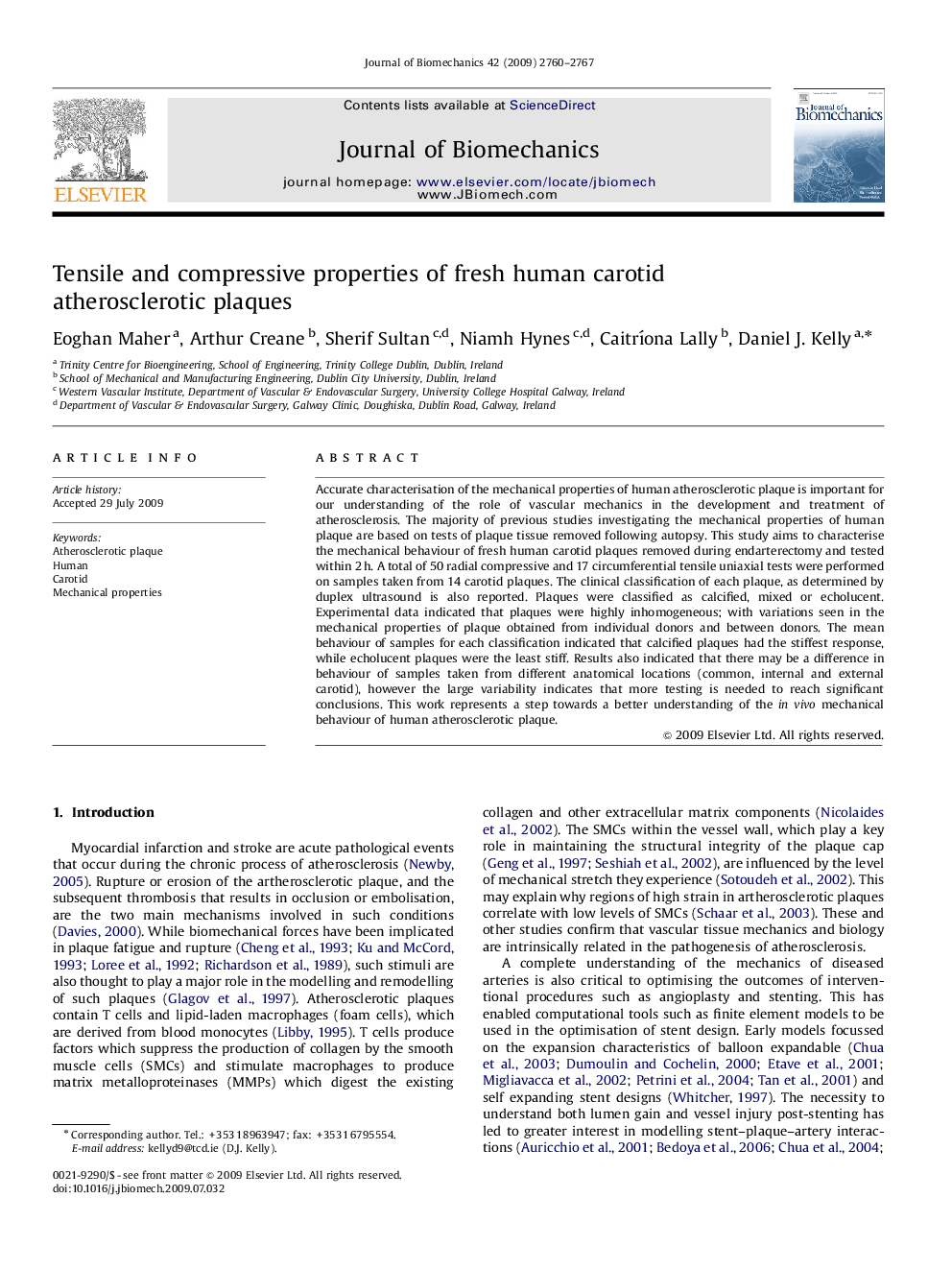| Article ID | Journal | Published Year | Pages | File Type |
|---|---|---|---|---|
| 874155 | Journal of Biomechanics | 2009 | 8 Pages |
Accurate characterisation of the mechanical properties of human atherosclerotic plaque is important for our understanding of the role of vascular mechanics in the development and treatment of atherosclerosis. The majority of previous studies investigating the mechanical properties of human plaque are based on tests of plaque tissue removed following autopsy. This study aims to characterise the mechanical behaviour of fresh human carotid plaques removed during endarterectomy and tested within 2 h. A total of 50 radial compressive and 17 circumferential tensile uniaxial tests were performed on samples taken from 14 carotid plaques. The clinical classification of each plaque, as determined by duplex ultrasound is also reported. Plaques were classified as calcified, mixed or echolucent. Experimental data indicated that plaques were highly inhomogeneous; with variations seen in the mechanical properties of plaque obtained from individual donors and between donors. The mean behaviour of samples for each classification indicated that calcified plaques had the stiffest response, while echolucent plaques were the least stiff. Results also indicated that there may be a difference in behaviour of samples taken from different anatomical locations (common, internal and external carotid), however the large variability indicates that more testing is needed to reach significant conclusions. This work represents a step towards a better understanding of the in vivo mechanical behaviour of human atherosclerotic plaque.
